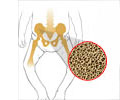Scientists at MIT have discovered a key protein that plays a crucial role in the recycling of iron from blood.
Scientists at MIT have discovered a key protein that plays a crucial role in the recycling of iron from blood.
According to lead researcher Jane-Jane Chen, a principal research scientist in the Harvard-MIT Division of Health Sciences and Technology (HST), his team’s finding’s could pave way for new therapies for certain inherited blood disorders such as beta-thalassemia, a condition that causes chronic anemia.Two years ago Chen and colleagues showed that a protein, heme-regulated eukaryotic translational initiation factor 2 or HRI for short, keeps mice with beta-thalassemia alive. This protein minimizes an abnormal and toxic imbalance of globin chains, the protein base for the hemoglobin found in red blood cells.
In the new study, the team has found that HRI also plays a key role in the body's iron recycling process. Chen observed that this process falters in mice lacking HRI. As a result, less iron was available for use in the creation of new red blood cells.
A closer inspection revealed that HRI influences two mechanisms in this recycling process. First, a lack of HRI reduces levels of another protein called hepcidin. Hepcidin, recently discovered to be the master regulator of the iron cycle, releases iron from stores in the body and makes it available to be processed into hemoglobin. Without hepcidin, the body retains iron, but never puts it to work.
The team also found that HRI, which is expressed predominantly in the precursors of red blood cells, is expressed in macrophages. Macrophages are cells that literally reach out and grab dying red blood cells and eat them, digesting them and releasing the iron from their hemoglobin back into the system.
Chen said that a lack of HRI causes these macrophages to lose their appetite, gobbling down fewer red blood cells. Instead of being digested and recycled, the red blood cells die and end up excreted through the kidneys. The result is a net loss of iron from the body.
Advertisement
“Perhaps we will find a compound that could help patients with beta-thelassemia or other diseases where HRI plays a role,” said Chen.
Advertisement
The study is published in the October 11 Journal of Clinical Investigation.
Source-ANI
LIN/C











